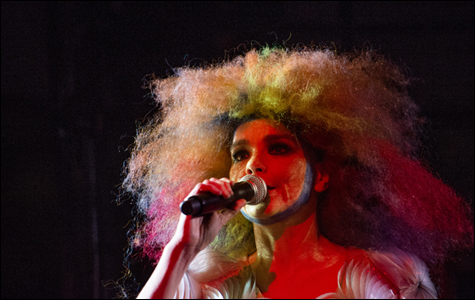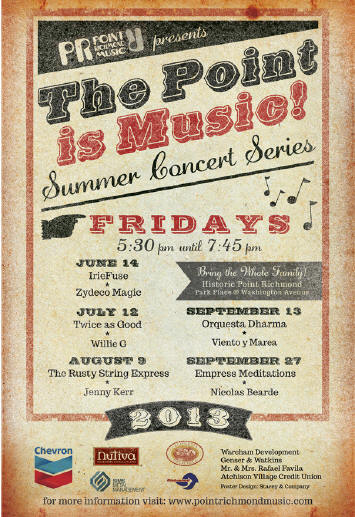| |
Acoustic Guitar magazine moving from Marin to Richmond
By Paul Liberatore, The Marin Independent Journal
Posted: 05/31/2013 10:30:41 AM PDT
Updated: 05/31/2013 10:30:42 AM PDT
String Letter Publishing, home of Acoustic Guitar and Strings magazines, is moving to Richmond after more than two decades in Marin County, founder and publisher David Lusterman announced Thursday.
The business is vacating its longtime quarters at 255 West End Ave. in San Rafael and, as of Monday, will be operating from a suite at 501 Canal Blvd., the same office complex near Point Richmond that Pixar moved into when that company left Marin.
"We wanted to stay here but we couldn't come to terms with our landlord," Lusterman said. "When we looked at alternative locations in Marin, nothing was as attractive or economical as the place in Point Richmond."
The move comes at a time when the monthly Acoustic Guitar, which Lusterman founded in 1990, and Strings, a publication for players of bowed string instruments, have been hit hard by a decline in advertising revenue.
"Nothing has changed with our audience and readers, we've just been super challenged on the advertising side," Lusterman said. "We've had to lay off people and downsize. It's been a drag."
In 2009, Lusterman founded the nonprofit Marin Community Music School, which will remain in its original site at 55 San Anselmo Ave. in San Anselmo. The school recently hired Kati Dombrosky of Fairfax to serve as its associate director.
In response to the recent ukulele boom, String Letter has high hopes for its recently launched Ukulele magazine, available only on newsstands and music stores. A third issue is due in September.
Lusterman, who lives in San Anselmo, will soon be a Richmond-San Rafael Bridge commuter.
"It's kind of bittersweet because we've been here in Marin forever," he said. "But I don't feel we're leaving. It's just over a bridge."
Contact Paul Liberatore via email at liberatore@marinij.com. Follow him on Twitter @LibLarge. Read his blog at blogs.marinij.com/marinmusicman/
---
©2013 The Marin Independent Journal (Novato, Calif.)
Visit The Marin Independent Journal (Novato, Calif.) at www.marinij.com
Björk Breathes New Life Into Craneway Pavilion
The Craneway Pavilion provided an ideal setting for the singer's Biophilia tour — and may help the venue make a name for itself.
By Whitney Phaneuf

click to enlarge
- Paige Parsons
- Björk's camp struggled with finding a Bay Area venue that was appropriate for her show.
When tickets for Björk's long-awaited West Coast tour were announced in early April, the Icelandic pop star tweeted: "And the venues are...(drum roll): the craneway in san francisco & the hollywood bowl & hollywood palladium." At her set on Wednesday, May 22, Björk said, "Thank you, Bay Area" enough times to make it clear that she knew she wasn't in San Francisco, but it still felt like no one in the crowd understood why her three Bay Area shows happened at the Craneway Pavilion in Richmond.
At the Craneway, there is a sense of being on the edge of the bay — waterfront views that span the Port of Oakland, the San Francisco skyline, and parts of Marin County — and attending Björk's Biophilia tour, there is a sense of experiencing the far reaches of human existence. It is, in so many ways, an unlikely but perfect union. So how did the Craneway land its first Live Nation event?
First, some background: Björk kicked off her Biophilia tour in 2011, but the concept went beyond live performances and recorded music: It incorporated interactive design, web and mobile apps, a documentary, and a series of educational workshops. Björk's camp considered performing at The Exploratorium back in 2012, when it was still located in its original home at The Palace of Fine Arts, according to Live Nation production director Ron Bergman. But when all dates last year were cancelled due to Björk's throat surgery, Live Nation was tasked with finding a venue large enough to accommodate her 360-degree, in-the-round performance (in which the audience surrounds the stage) that could still maintain an intimate feel.
"This is a one-off show, not a touring production," said Bergman as his crew was busy setting up for Björk's performance. "She didn't want to play an arena, and it had to be in the round."
Bergman said that most tours come pre-loaded and assembled, but Björk's required his team to rig oddities that included four ten-foot wooden pendulums, two Tesla coils connected by a metal cage, and eight large screens. Live Nation also constructed an elevated stage and set up bleachers and floor seating to accommodate the 4,000-capacity crowd. After 34 years at Live Nation, Bergman said Biophilia "doesn't look like any tour we've done before."
Live Nation considered many San Francisco venues for the show, Bergman said, including Fort Mason, but finally confirmed Craneway in February, only two months before the show was publicly announced. Bergman admitted that he initially didn't consider the former Ford assembly plant a viable music venue.
The family that owns and operates Craneway, developer Eddie Orton and his son, Joey Orton, believe the Björk shows will help the venue establish a solid reputation in the music industry and among fans. "We're hoping to usher in a new era of music at the Craneway," Joey Orton said. "We haven't had nearly as many concerts as we deserve. It's a big step for us."
The Ortons started redeveloping the Craneway in 2003 with live concerts and events in mind. The 45,000-square-foot glass-enclosed pavilion was designed in 1930 by architect Albert Kahn, and is tall enough to fit a train inside its massive doors. The venue gets its name from the cranes that once hoisted completed Fords onto waiting train cars. Orton said the building "was crumbling and uninhabitable" when they began work; as part of the process, the Ortons replaced more than 40,000 windows. Even when the Craneway opened its doors in 2008, the acoustics were not yet in place to house live music.
"When we opened, it was just a big empty room," Orton said. The Ortons enlisted Berkeley's Meyer Sound to take down the reverb levels — upgrades that cost $100,000 and took two years to complete. In addition, they added staging infrastructure and professional lighting, and hired former Shoreline Amphitheatre general manager Lance Miller to oversee operations.
"[Live Nation] came to check out the venue and saw how far it has come," Orton said. "It took them a long time to find the right venue for it. They'd been trying for two years." Orton said they quickly "worked with Live Nation to give them a deal they'd be excited about. We gave them a really great deal."
Beyond the venue's lack of reputation, Orton said the perception of Richmond as a hotbed of crime didn't give promoters confidence in its draw, even though people familiar with the East Bay know that the area surrounding the Craneway is pretty removed from many of those issues. "Anyone who comes on our site immediately realizes that it's safe," Orton said.
The venue's remote, waterfront location also presented issues of access, requiring concert-goers to take BART and a bus or drive to the venue, which Craneway and Live Nation addressed by including an option of round-trip ferry service from San Francisco in the ticket price. Orton said that the venue dedicated a staff member to answering calls regarding transportation.
On Wednesday night, a nearly full moon rising above the water, no one seemed to mind the location. Aside from moments of confusion about where to find the bar or bathrooms, the crowd easily flowed into the vast space.
Around 8:45 p.m., the lights dimmed and a 24-member, all-female choir clad in gold sequined costumes calmly started the set with the folk song "Óskasteinar," singing its Icelandic lyrics in breathy, high notes as Björk took the stage. The lights came up to reveal the singer, in silver sequins and a massive wig, surrounded by the choir, a harpist, a drummer, a DJ, the four pendulums, and a MIDI-controlled pipe organ; above her, the Tesla coils were slowly lowered. As they launched into "Thunderbolt," one of the more high-energy songs off Biophilia, the stage exploded in electricity — both musical and literal — the Tesla coils sparking in time to the beat of the song. Björk's soprano arpeggios soared over the chaos, as robust, elastic, and expansive as the song's theme of love and desire.
The set list, mostly composed of tracks off Biophilia, moved seamlessly between up-tempo, bass-heavy songs like "Crystalline" and slower, harmonized ones like "Dark Matter." A few of Björk's older tracks were peppered in between, including "Hidden Place" and "Pagan Poetry" off 2001's Vespertine, both of which fit into Biophilia's overarching theme about the intrinsic bond between living organisms. As expected, the crowd erupted when Björk kicked off a three-song encore with "Possibly Maybe," the only track she played off Post, one of her most popular albums; it was a significantly rearranged version that gave the choir a major role in the song. Just before the encore, the choir exited the stage for "Solstice," leaving Björk to sing accompanied only by the harpist. As her voice crashed over the violently plucked, off-kilter harp, the pendulums swayed and created sweeping shadows across the stage. It was movement, perfectly embodied in that moment, as if Craneway itself was floating adrift in the bay.
Point Richmond Music
Free Outdoor Music Series Runs June 14th through September 27th with Five Friday Concert Dates in Downtown Point Richmond. See http://www.pointrichmondmusic.com/ for details.

|
|

